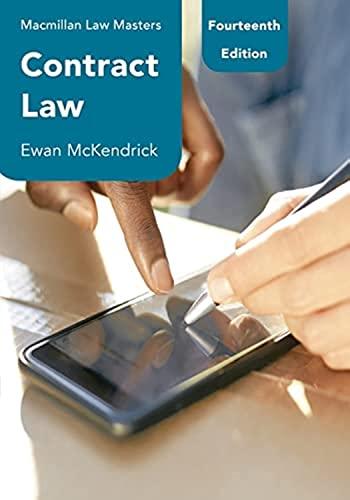Question
Can you please comment on what I did well and what I could have done differently in the following response I wrote? Here is the
Can you please comment on what I did well and what I could have done differently in the following response I wrote? Here is the question I had to respond to:The Bill of Rights is largely concerned with the rights of the criminally accused or convicted. Modern American law is more and more taking into account the rights of victims, and some jurisdictions have adopted a "Victim's Bill of Rights." How might a Victim's Bill of Rights potentially conflict with the Bill of Rights? Provide examples. And here is my response:The Bill of Rights is concerned with the rights of the criminally accused and convicted because of how the states and the justice system do things prior to the amendments. The Modern American law is more and more considering the rights of victims, and some jurisdictions have adopted a "Victim's Bill of Rights, because of the unity and fairness that is being established in today's justice system. A victim's Bill of Rights potentially conflicts with the Bill of Rights by the victim not being protected, not having a fair trial, and accused of convictions by the amendment in the Bill of Rights. Miranda v. Arizona is a case where safeguards advise suspects in police custody that they have a right to remain silent." The case of course, contains significant constitutional issues, but historical and analytical discussion of the fifth and sixth amendments does not go to its heart" (Elsen & Rosett, 1967, p.645). It is aspects of the decision that have given rise to Miranda, and the idea of defense lawyer in police cars and the burglars demanding to be warned of their rights and provided with an attorney have found into their public concern. "In passing on the admissibility of the confessions in Miranda, and it companion cases, the Court did not ask the traditional questions, but instead asked whether the police complied with rules which the Court proceeded to announce, rules deemed necessary to protect the suspect's right against self-incrimination" (Elsen & Rosett, 1967, p.646). The Court did not rely on the records of the cases before to provide for decisions.
Step by Step Solution
There are 3 Steps involved in it
Step: 1

Get Instant Access to Expert-Tailored Solutions
See step-by-step solutions with expert insights and AI powered tools for academic success
Step: 2

Step: 3

Ace Your Homework with AI
Get the answers you need in no time with our AI-driven, step-by-step assistance
Get Started


